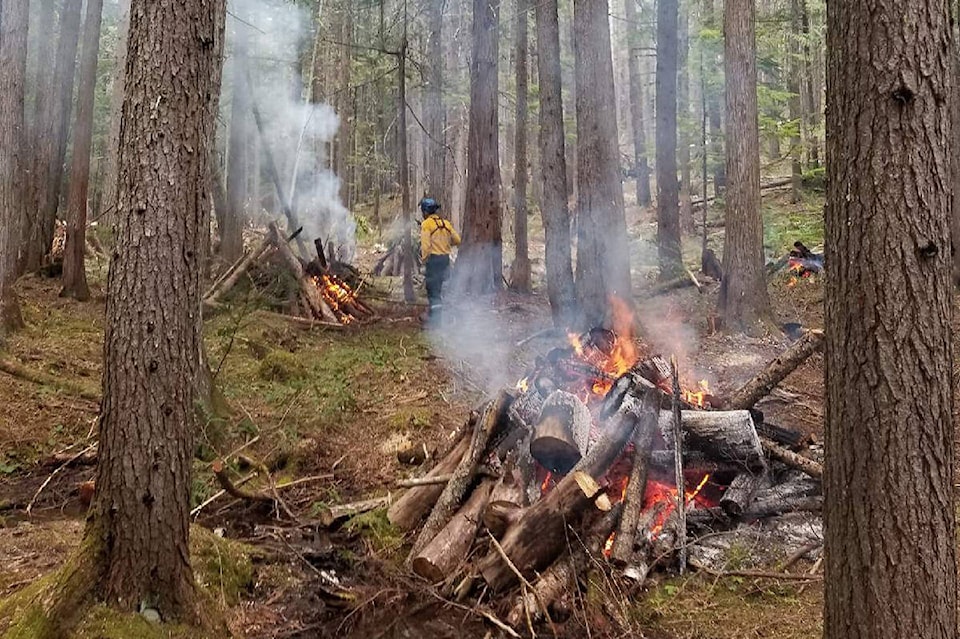Parks Canada fire crews are burning piles of wood debris along the lower slopes of Mt. Revelstoke.
Smoke may be visible, today (Sept. 13) and over the next few weeks, as crews work to reduce forest fuels in this area and complete a section of the community fireguard surrounding the city.
If conditions allow, they will conduct prescribed fire work on the front face of Mt. Revelstoke in late September or early October.
“This work is a continuation of planned wildfire risk reduction measures that include the lower slopes fireguard and last year’s Parkway Bend Prescribed Fire in Mount Revelstoke National Park,” Parks Canada said in a statement.
In Glacier National Park, wood debris was piled and burned in the Loop Brook and Sir Donald campgrounds. Additional pile burning in the Rogers Pass may occur as required.
READ MORE: VIDEO: Highlights from the Kootenay-Columbia all-candidates online public forum
“If conditions are favourable this fall, Parks Canada fire crews plan to ignite a section of the 20-Mile Prescribed Fire area in the Bald Hills of Glacier National Park. Safety is Parks Canada’s top priority,” the statement reads.
However, prescribed fires are only conducted under exacting conditions to ensure the safety of the public, crew, infrastructure and neighbouring lands.
Other projects in the works to reduce wildfire risk include:
• clearing vegetation around buildings and infrastructure
• burning debris piles left from hazard tree removal and fire guard clearing
@RevelstokeRevue
editor@revelstoketimesreview.com
Like us on Facebook and follow us on Twitter.
